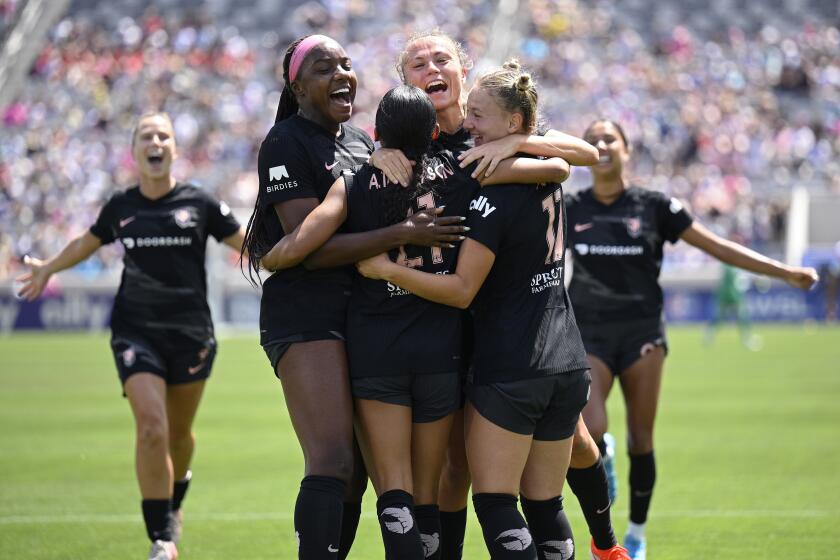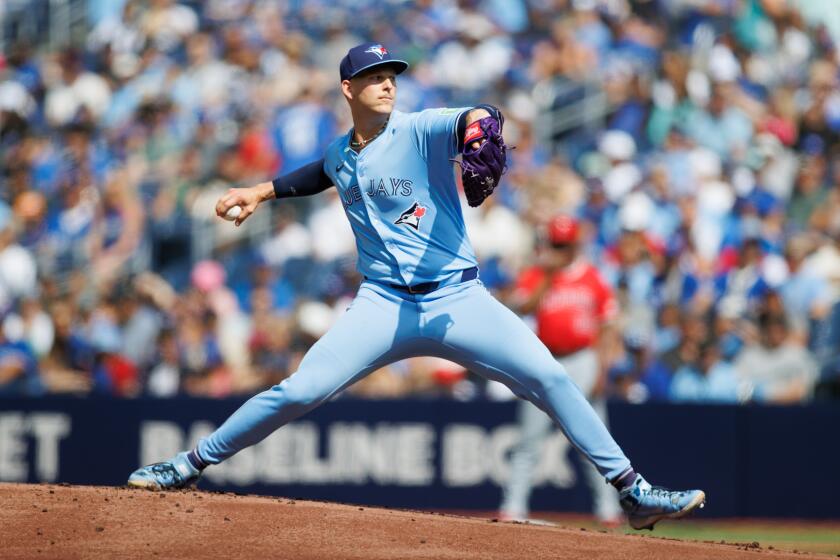Commentary : Men’s Tennis in State of Leadership Chaos
Men’s tennis is bracing for the era of player power and the biggest upheaval since the sport opened its doors to professionals 21 years ago.
As the Australian Open gets under way in Melbourne on Monday, the first big tournament of what could be tennis’ final season of the status quo, the world’s top players want to scrap a system that has made them rich but which they view as messy, fragmented and physically too demanding.
Instead, they say, their proposed breakaway Association of Tennis Professionals tour, scheduled for 1990, will be less cluttered, more competitive and exciting, and will include an eight-week off-season at the end of the year to let injuries heal.
Stars such as Mats Wilander, John McEnroe and Pat Cash are preparing to run their own show, dictating who plays where, for what fee and against whom.
If golf’s professionals control their sport, why can’t tennis professionals, the argument goes.
“I have always believed that the players should have more of a say in their own destiny,” said Jimmy Connors, one of the longest-serving players on the men’s tour. “This is their chance, and they must make it work. If it fails, and they have to go crawling on their knees back to the lawmakers, then it is the end of the sport as we know it.”
Supporters of the present Grand Prix, lifeblood of men’s tennis for nearly 20 years but now threatened with extinction, say the players are taking a huge gamble.
They warn the sport could be plunged into chaos if player power is allowed to take root, with many well-supported tournaments thrown on the scrap heap.
Although neither side has yet struck a sponsorship deal -- Nabisco’s backing of the Grand Prix runs out at the end of the year -- each has laid out a multimillion-dollar package to woo the players.
“The ATP format is unfavorable for both the players and the tournaments,” said Marshall Happer, director of the Men’s Tennis Council, governing body of men’s tennis.
Happer said the council intends to continue with its own circuit in 1990 and has called a meeting in Melbourne on Sunday to try to resolve the biggest political split in recent tennis history.
“I am still convinced that a compromise ... remains the optimum solution to the current dispute,” Happer said.
In a letter to ATP executive director Hamilton Jordan, Happer said the ATP’s alternative tour was “not even close” in terms of benefitting players, tournaments or the sport in general to the council’s Grand Prix format for 1990.
“We really should compromise before our sport goes into permanent turmoil,” Happer warned.
Under the present system, the ATP, the tournament directors and the International Tennis Federation -- which runs the Grand Slams, Davis Cup, Olympic tennis and the amateur game -- each has a third of the vote governing men’s tennis.
The circuit’s 78 Grand Prix events plus the year-end Masters are worth a total $37 million. The world’s top 100 players are ordered by the council to play 14 of these, including the Grand Slams, plus the Masters and the WCT finals in Dallas if eligible.
Eight of the 78 events are worth over $1 million each, including the four Grand Slams.
The proposed ATP tour will give players and tournament directors a 50-50 share of control, with a streamlined calendar of 19 showcase events, 13 of them with prize money of at least $1 million and six worth $600,000.
The top players will have to play any 10 of these, plus the Grand Slams. Other players will earn their income through lower-level, less-lucrative tournaments.
Almost all the players say this format will stop rival tournaments being staged at the same time in different countries, a system that prevents the stars from playing each other on a regular basis.
“They are burning us out,” said two-time Wimbledon champion and reigning Masters titlist Boris Becker, who has only met Wilander six times in five years. “Soon people will see better tennis and more big matches.”
Happer contends that a revamped Grand Prix tour run by the council would offer a far more lucrative alternative, with bonus and pension plans worth millions of dollars.
The players could have their 50 percent voting rights, he said, and an eight-week layoff, provided they are prepared to play more tournaments.
The answer from most of the stars is a firm “no.”
“It’s hard to keep your interest up for so many tournaments when you don’t play the best guys,” said Wilander, the world’s top-ranked player. “You don’t get to see the top players against each other very often.”
Happer’s hopes of maintaining partial control over the men’s game suffered a serious blow last month when one his strongest supporters, ITF president Philippe Chatrier, softened his stance against the players’ tour.
In a statement, Chatrier said a change in the current system was “necessary and desirable” and would be best accomplished “in the context of a reorganized MTC.”
But, he said, “if all the tournaments and players want to join the ATP proposed tour, I shall sincerely wish them good luck, hoping the ATP will be able to meet that challenge.
“The International Tennis Federation does not want to see a fragmented game that can only be damaging for our sport.”
As both sides fight for control of the game, tournament directors and sponsors have been left in limbo, waiting to see which way the axe falls.
Many organizers of second-level events, assured hitherto of at least some top stars to boost interest, may now be left in the lurch.
They fear that with second-level players only, sponsors and spectators alike will desert them.
Jim McManus, operations director of the ATP, said that with less than a year to go, no sponsorship of the proposed tour has yet been arranged.
“Now that the tour is a reality, our marketing department will be seeing what is available and what is most viable,” he said. “No decision has been made whether the whole tour will be sponsored by the same company, or whether it will be broken into geographical areas or individual tournaments.”
More to Read
Go beyond the scoreboard
Get the latest on L.A.'s teams in the daily Sports Report newsletter.
You may occasionally receive promotional content from the Los Angeles Times.






